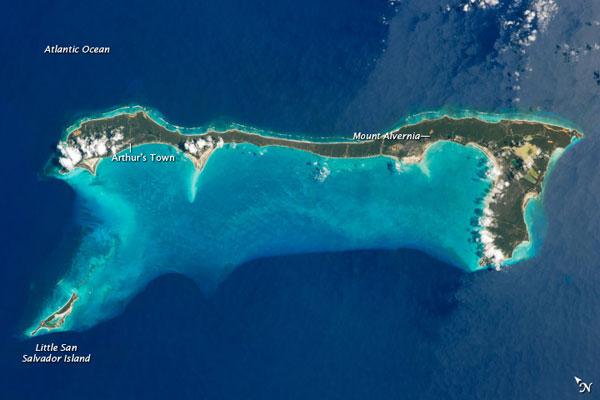Bahamas from Above: Cat Island


Cat Island, shown in this photo taken by astronauts aboard the International Space Station, is one of 29 islands, 661 cays, and 2,387 islets that form the Commonwealth of the Bahamas.
Named San Salvador prior to 1925, Cat Island has been put forward as a candidate for where Christopher Columbus may have made his first landfall in the Americas.
Mount Alvernia the highest point in the Bahamas , with an elevation of approximately 206 feet (63 meters) above sea level is located on the southeastern part of the island.
Like most other islands in the Bahamas, Cat Island is located on a large depositional platform that is composed mainly of carbonate sediments and surrounding reefs. The approximately 48-mile-long island (77 kilometers) is the part of the platform continuously exposed above water, which allows for soil development (brown to tan areas) and the growth of vegetation.
Shallow water to the west-southwest (below the island in this view) appears bright blue, in contrast to the deeper ocean waters to the north, east and south.
Cat Island is inhabited, and had a total population of 1,647 in 2000, according to the Department of Statistics of the Bahamas. The smaller island of Little San Salvador to the west is privately owned and used as a port of call for cruise ships.
- The Island of Seven Mountains
- Bahamas from Above: Brilliant Blues and Sandy Shores
- An Artificial World Sticks up from the Sea
Get the world’s most fascinating discoveries delivered straight to your inbox.



